Feral colonies around us in trees and structures can be considerably smaller than traditional Langstroth colonies. Warré understood this when he developed his remarkable hive at the turn of the 20th century. Each region will have its variation that requires adaptation by the beekeeper. Some regions may have the potential of a huge honey crop, however they may also have a long bitterly cold winter. Other regions, like Utah, averages about 30 lb per colony per year, but has a short winter. In Utah, winter usually begins in mid-December and is over by mid-February. Even though winter may have not begun or is over doesn't mean resources are now available to the honey bee colony. Summer and fall robbing may have depleted the colony's resources, as well as droughts, storms and other natural issues that affect forage and other habitat qualities. Here is what we recommend for preparing a Mini Urban Beehive to successfully overwinter.
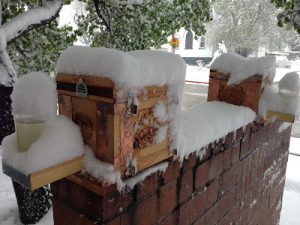
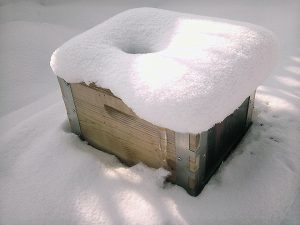
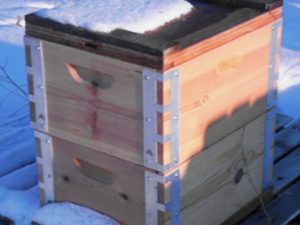
The typical Mini Urban Beehive begins with 2 frames or more of brood of varying ages, 3-5 days later a queen cell appears, and later still it is capped then emerges. This local queen then mates in your neighborhood with perhaps up to 15 drones. This queen then returns to her colony and begins laying off-spring. During this period the new colony should be fed supplemented sugar syrup and protein supplements.
At this time the external entrance feeder should be regularly filled, the lower entrance completely closed with the upper entrance left as the only entrance for the bees to use and defend. We've seen problems with metal entrance feeders, the lids often have too many holes in them and the way the feeder is made allows for leaking and invites robbing. We recommend using a solid block feeder instead of a metal entrance feeder and leaving the remainder of the lower entrance closed off. A robbing environment can still be caused by poor inspections where there is dropped honey and comb, or internally leaking honey or nectar. This type of problem exists with traditional hives as well as all non-traditional hives, such as top-bars and Warré. Anytime honey is permitted to be left laying around or leaking from a hive, robbing by other bees, wasps, ants, rodents can occur. We advise you to keep your hive and area clean, this creates a safe habitat for your "babies".
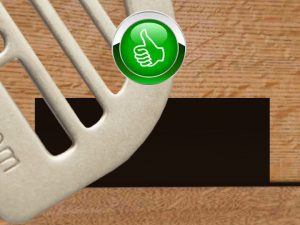
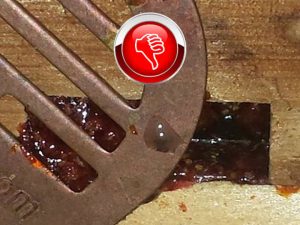
Keep upper entrance open and cleared
How to prepare for winter will vary in each region, but are some tips for you to consider.
Many will point fingers at the usual threat of the varroa mite, but the very nature of how the colony begins with rearing it's own queen and being broodless for a time breaks the mite cycle. Mites are introduced to colonies through foragers and robbing bees. The young beehive does not have either initially. The threat of a robber coming in may bring in mites. The first season mites are usually not an issue. A fall or early winter treatment of oxalic acid is a possibility, but due to the size of the hive, we suggest a smaller dosage. Further study is needed as well as how other mite treatments are to be applied to a mini colony. The oxalic acid drizzle method is also an option and is simple to apply.
Use oxalic with all recommended safety precautions. Oxalic Acid recommendations are,:
Dribble method 1:1 sugar to warm water mixture, and 5mls per seam on a standard frame or a 1/3 that (1 1/2 mls) per mini seam.
Spraying with a mist is also acceptable with swarms and packages with the same 1:1 solution listed above.
1 gram is acceptable with the vaporization method with a Mini
Winter may be extremely cold and long for some. Our original advice was if feral colonies exist in your area in trees, then so can the Mini Urban Beehive. Now we take it a step further, and suggest that when days get below 32 degrees Fahrenheit, the beehive can be easily lifted and placed into a dark cold storage, or shed. The ideal external temperature needs to be about 40 degrees Fahrenheit, or lower. If the temperature is higher, the bees will want and need to fly for cleansing and forage. If the colony is placed into a garage, the potential of it getting above 50 degrees is high and most garages have a window, which poses the threat of drawing the bees to a place they never return from. Dark and about 40 degrees is recommended. In areas like Canada, a cool shed of -10 is better than outdoors at -40!
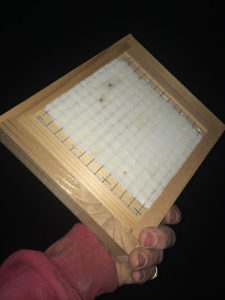
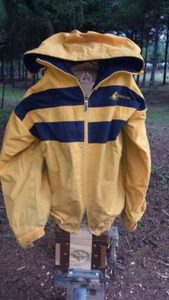
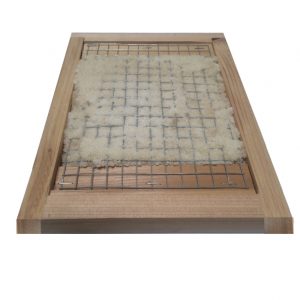
Mini Candy Board, or Fondant for winter feeding
Some want a blanket for their hives. Eco Bee Box offers an adjustable blanket covers that allows for access from both the top and lower entrances. In areas like Oregon, the main threat is moisture. The colony has to stay dry during the winter months. Placing a candy board on the top of the hive will draw out some moisture, but the effect is limited. Putting a box filled with cedar shavings with a screen under it, on top of your hive, will draw out more moisture, but it may need to be checked from time to time and resupplied with new dry material.
How many boxes are needed for a mini colony to survive the winter? Here in Utah we have taken single mini boxes through the winter. Others with no experience have neglected a double mini colony in Utah and still survived in Utah. We suggest a goal of two or more mini boxes for Utah, other states may vary.
We believe in and highly recommend using an upper candy board for both winter feeding and simple moisture control. Bees eat and digest crystallized sugars during winter, NOT LIQUID SYRUPS. If too much uncrystallized honey exists, moisture may be an issue during winter. Some tricks to consider for fall and winter are as follows.
If you have drawn comb in fall that is empty, two options exist for feeding. One, mix up a 2 parts sugar to 1 part water (we always add supplements by Complete Bee), get a syringe from the pharmacy and fill the cells. Place into the hive, the bees will move it as it has not been modified by the bee yet and needs their gut enzymes added and dehydrated. Another method is to mix up candy, and put it into the empty cells. Our full recipe is 12 cups cane sugar, 3/4 cup water, 2 caps of Complete. Once completely mixed, put into a candy board, or empty drawn frames. Let dry over night, and then it is ready to use.
During fall and late summer, if the colony is strong, we allow a finger sized opening at the bottom entrance. In winter, the lower and upper entrances need to be open for ventilation and cleansing flights. During winter bees naturally will die and drop in the hive, and if left unattended to this will clog the bees' ability to get out and they WILL die. Regularly clean out the debris from blocking the lower entrance.
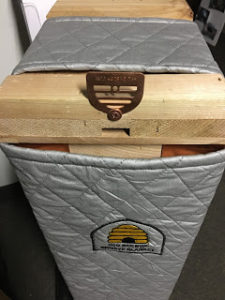
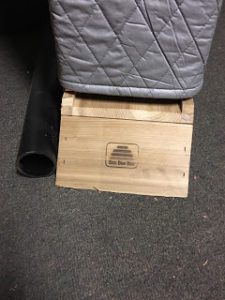

Eco Bee Box Winter Beehive Blanket
Our Winter Beehive Blanket allows for bee flights, but gives extra warmth where needed and leaves the lower entrance open for passage!
If you have a large Langstroth hive, we suggest that in preparing for winter you drill a pinky-sized hole through the center of all your frames, so the bees can recluster all winter. The threat we regularly see is bees will remain on separate frames eating honey and absorbing heat from the next frame. They don't move away from their heat source, and will starve even though honey stores are all around them. Giving them a central access point allows them to recluster all winter. If the hole is drilled too soon in fall, the bees will close it, so do this at the last inspection.

